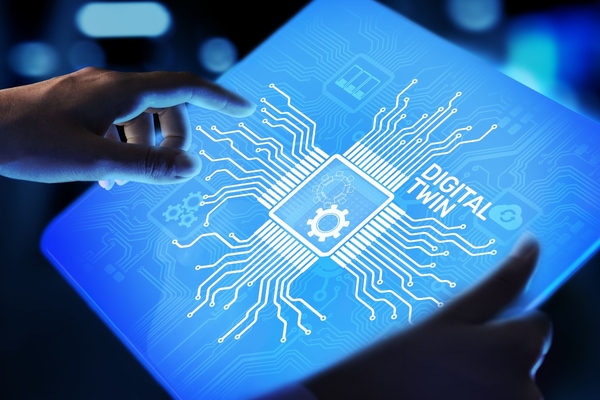The Rise of Digital Twins in Sales
Digital twins, a technology previously reserved for industries like manufacturing and engineering, are now enhancing sales strategies. By replicating physical assets into virtual models, they offer customers an immersive experience that aids faster decision-making. As customer expectations evolve, digital twins have proven to be an effective tool in shortening sales cycles and creating more engaging interactions.
Understanding Digital Twins: A Foundation for Sales Integration
What Are Digital Twins?
Digital twins are virtual representations of real-world objects or systems. These virtual counterparts use real-time data and IoT devices to simulate how things operate, behave, or interact. For sales, digital twins represent products or services, enabling customers to interact with them virtually before making a purchase. The technology gives businesses deep insights into how products function and allows for a more interactive approach to customer engagement.
The Technological Components Behind Digital Twins
IoT and Sensors: IoT devices continuously collect data that feeds into digital twins, ensuring the virtual model remains a real-time reflection of its physical counterpart.
Big Data and Analytics: Large datasets are processed to provide insights that improve decision-making and the customization of sales approaches.
AI and Machine Learning: These technologies optimize digital twin models by learning from past interactions and improving predictions on customer preferences and behaviors.
Cloud Computing: Cloud infrastructure supports the scalability of digital twins, ensuring seamless access and updates across various platforms.
Digital Twins in Sales: How It Transforms the Customer Journey

The Sales Funnel Reinvented with Digital Twins
Digital twins are reshaping the traditional sales funnel by providing interactive and personalized experiences throughout a customer’s journey. Unlike the conventional approach, which may rely on static images or descriptions, digital twins create dynamic, immersive experiences that engage customers early in the buying process.
Pre-sale Immersion: Digital twins help customers interact with products virtually before purchasing. They can explore a product’s features, specifications, and usage in a customized environment.
Real-time Customization: As customers engage with the product models, they can instantly customize products to meet their needs and see how these changes affect the outcome.
Instant Feedback: This constant loop of interaction ensures customers receive immediate responses to their questions and concerns, leading to faster decision-making.
Creating Real-Time, Personalized Experiences
Digital twins create opportunities for businesses to engage with customers on a deeply personalized level. With these virtual models, customers can interact with products in a way that mirrors real-life scenarios.
Interactive Virtual Showrooms: Customers can virtually explore a product or service in a showroom setting, gaining a deeper understanding of the offering before committing to a purchase.
Product Simulations and Demonstrations: By simulating how a product works in different environments, customers gain a clear, hands-on understanding of its functionality.
Engagement Through AR and VR: With the help of augmented reality (AR) or virtual reality (VR), customers can immerse themselves in a virtual environment that enhances the real-world experience, whether in the comfort of their home or in-store.
Leveraging Digital Twins for Faster Conversions
The Power of Visual Immersion in Decision-Making
Digital twins bring immense value by providing visual and interactive experiences that speed up the decision-making process.
Instant Gratification: Customers can explore, test, and experience products virtually in real-time, satisfying their need for information and reducing hesitation.
Faster Product Trials: Virtual product trials allow customers to experience items like cars, furniture, or even real estate without physically being there, streamlining the decision process.
Increased Confidence: When customers engage with a product through digital twins, they gain confidence, knowing they’ve fully explored all features before purchasing.
Data-Driven Insights for Targeting the Right Customers
Digital twins not only offer immersive experiences, but they also provide valuable data on customer behavior and preferences. Businesses can use this data to refine their sales tactics and tailor experiences to individual customers.
Predictive Analytics: By analyzing the interactions with digital twins, businesses can predict customer behaviors and trends, optimizing sales efforts and marketing campaigns.
Segmentation and Personalization: Understanding how different customer segments interact with digital twins allows for hyper-targeted content and offers, increasing conversion rates.
Real-Time Feedback Loops: Collecting customer feedback during the digital twin interaction helps businesses fine-tune their sales strategies and quickly adjust to customer preferences.
Reducing Friction Points in the Buying Process
One of the key advantages of digital twins is how they remove traditional friction points in the buying journey.
Instant Feedback and Customization: Customers can make decisions on-the-spot about customizing products and receive immediate feedback about the changes.
Seamless Integration with CRM Systems: Digital twins can be integrated with CRM systems, allowing businesses to track customer interactions and streamline the sales process.
Eliminating Information Gaps: Through interactive virtual models, customers gain access to detailed information, allowing them to make more informed decisions without unnecessary delays.
Case Studies: Success Stories of Digital Twins in Sales
Case Study 1: Real Estate
Virtual Property Tours: Real estate companies use digital twins to offer virtual property tours, allowing buyers to explore homes without leaving their current location.
Enhanced Buyer Engagement: Buyers can visualize themselves in properties, leading to more informed decisions and faster property selections.
Case Study 2: Automotive Sales
Interactive Car Customization: Car dealerships allow potential buyers to configure and customize vehicles in real-time through digital twin models.
Augmented Test Drives: Virtual driving experiences enable customers to experience a car’s features and performance remotely, accelerating their purchasing decisions.
Case Study 3: E-commerce
Virtual Fitting Rooms: Online clothing retailers provide virtual fitting rooms, enabling customers to try on clothes digitally.
Product Visualization: Furniture and home decor companies use digital twins to help customers see how products would look in their own spaces before purchase.
Integrating Digital Twins Into Your Sales Strategy
Assessing the Right Use Cases for Digital Twins
Not every business or product is suited for digital twin integration. Here’s how to determine whether it’s the right fit:
Product Complexity: Digital twins are especially valuable for complex or customizable products that require a high level of customer interaction.
Customer Demographics: Consider whether your target customers would benefit from a more interactive, tech-driven buying experience.
Business Resources: Ensure you have the technological infrastructure and budget to implement and maintain digital twins effectively.
Creating a Seamless Digital Experience
It’s essential that the digital twin experience is consistent and easily accessible to customers across all channels:
Consistency Across Channels: Make sure the digital twin experience is uniform across both online and offline touchpoints.
Integration with Existing Sales Tools: Digital twins should integrate with your CRM, marketing automation, and other sales platforms to ensure a cohesive experience.
User-Friendly Design: Simplify the user interface and ensure the interaction with digital twins is intuitive and easy to navigate.
Overcoming Challenges in Implementation
While digital twins offer immense benefits, there are a few hurdles to overcome:
Cost and Time Considerations: Building and maintaining digital twins can be resource-intensive, so consider the ROI carefully.
Customer Education: Ensure your customers understand the value of engaging with digital twins and how to make the most of the experience.
Data Privacy and Security: Since digital twins rely on real-time data, it’s essential to safeguard customer information and comply with privacy regulations.
Future Trends: The Evolution of Digital Twins in Sales
Expanding into New Sectors
As digital twins evolve, they will find applications in several new sectors:
Consumer Goods: Retailers will adopt digital twins for products like appliances, electronics, and furniture, offering customers virtual interactions before buying.
Healthcare and Pharmaceuticals: Medical companies could use digital twins to simulate treatments or medical devices, aiding in customer adoption.
Industrial Equipment: B2B industries can use digital twins for machinery and systems, allowing clients to interact with complex equipment before purchase.
The Role of AI and Machine Learning in Future Innovations
Self-Optimizing Twins: In the future, digital twins will be able to learn from each interaction and automatically adapt, improving the customer experience.
Voice and Gesture Control: Customers will interact with digital twins using voice commands or gestures, further enhancing the immersive experience.
Personalization at Scale: Advanced algorithms will enable businesses to deliver unique, tailored digital twin experiences for every customer, based on their past behaviors and preferences.
The Impact of 5G and Augmented Reality on Digital Twins
Enhanced Immersion: With the advent of 5G, digital twins will become even more immersive, offering faster and smoother experiences.
Wider Adoption: As 5G networks expand, businesses will be able to offer high-quality digital twin experiences to a larger customer base.
Conclusion: Embrace the Future of Sales with Digital Twins
Incorporating digital twins into your sales strategy offers unparalleled opportunities for customer engagement and faster conversions. This technology not only creates personalized, immersive experiences but also provides valuable data-driven insights to optimize your sales processes. The future of sales is virtual, and businesses that embrace digital twins will stay ahead of the curve








